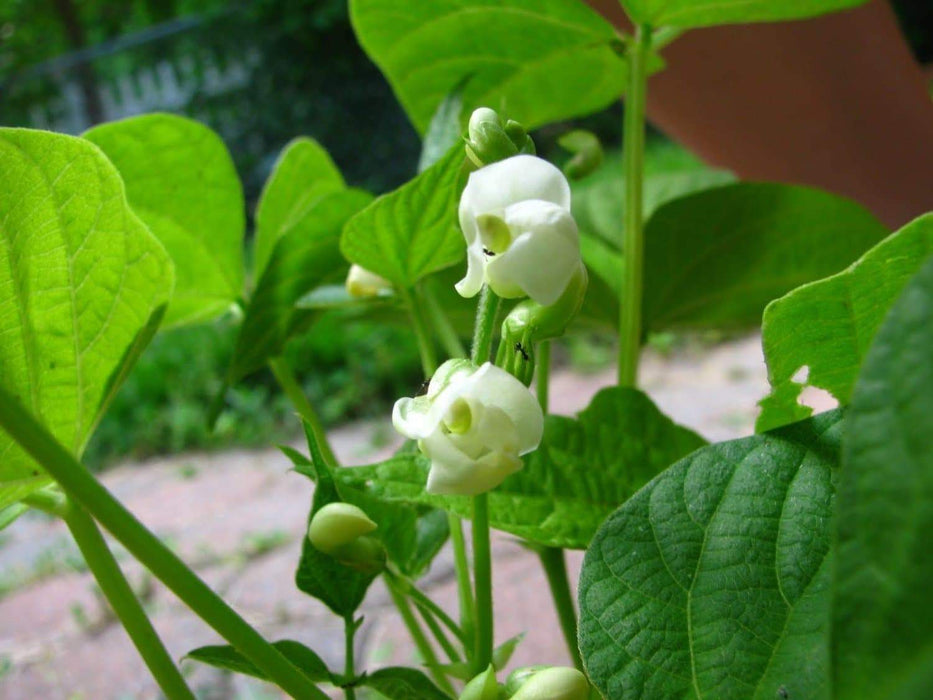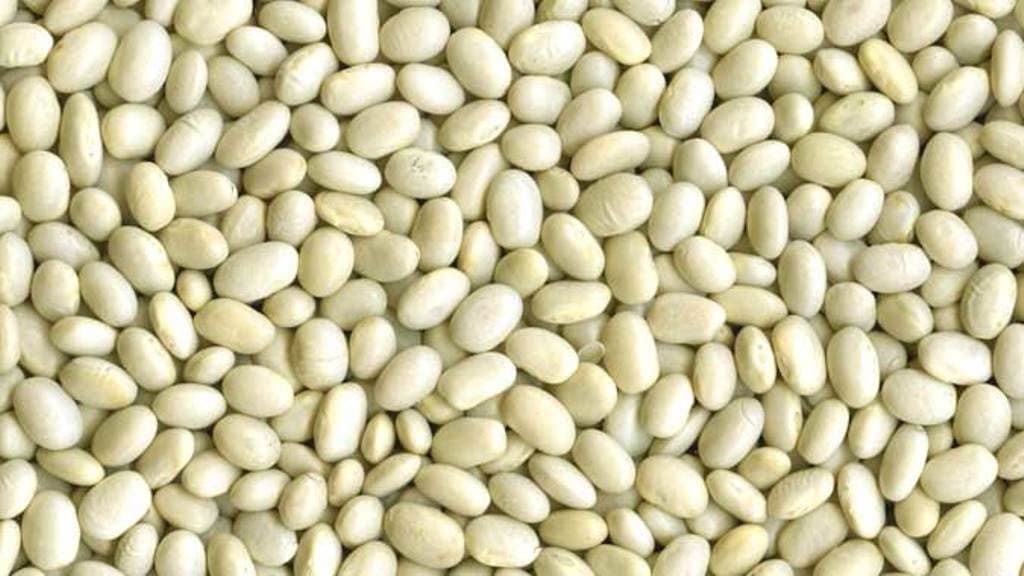
White Marrow, BUSH BEAN SEEDS,
Most orders are processed by the next day
Select your desired size and/or color from the available options.
Non-GMO, Heirloom, Grown Organically !
This heirloom variety is a navy bean that is much larger, egg shaped and much better for baking than most other navy beans. The plant habit is half runner and the flat inedible pods each have 5 to 6 beans per pod.
WHITE MARROW FAT BUSH BEAN, also known as White Egg, is an heirloom shelling type dating to 1850. The bright white beans are richly flavored and cook down for a nice soup. But you can also
eat as a fresh shelling bean. The half-runner type plants are prolific producers, with each 4"-5" yellowish pod containing 5-6 of the white jelly-bean shaped beans. Bush habit, 100 days to dry stage.
This is a plump white bean with a creamy texture, it was popular in the U.S. in the 1850's as a baking bean.They have the flavor of bacon. Puree nicely--good for soup.Fresh organic seeds.
Product Details
Large, white Navy type beans with 5 inch long, flat, straight pods. Easy to shell and excellent for baking. Matures in 100 days. This group of beans is a favorite for the home garden and can be grown just about anywhere because they have a relatively short growing season. They can be planted from seed as soon as the soil is warm (day temperatures are around 60 degrees Farenheit), in full sun and loose, well drained soil. Bush type beans are very easy to grow and manage, reaching a height of only 2 feet tall. To control harvest, bush beans can be planted every two weeks. To decide how many crops you can plant, divide your growing season by the maturation period of the variety you are planting. When preparing soil, be sure not to mix in too much nitrogen (5-10-10 is best) or you will get all plant and no beans. 1 pound per 100 square feet is plenty. There is no need to soak beans prior to planting and no need to heavily water right after planting. If coat is cracked too early, germination may be poor. Beans should be planted about 1 inch deep and two inches apart, with rows at least 2 feet apart. Pole type beans should be planted at least 4 inches apart, 6 inches being better, and have rows 3 feet apart. Pole beans will require some type of trellising system, with the tee pee system working quite well. It is alright if beans are a little crowded, as they lend each other support, however, thinning to 4 inches is best.
Zones: 3-9
Germination: 7-14 days
Days to Maturity: 85-100 days
Pod Length: 4" inches
Plant Height: 16-24" inches
Seeds Per Pod: 5-6
Comments: Great bean for cooking and offers great flavor.
DO NOT plant them too early. They will rot in cool, damp soil.
Plants reach twenty to twenty four inches in height. Its white seeds are an excellent choice for baked beans or soups. More tender and cook more quickly than Navy Beans.
When bush beans begin producing they often come in all at once. Staggered planting, every 2 weeks, will keep your bush beans going longer. Beans like a moderately rich soil with a slightly acidic pH of about 6.0 to 6.2.
They prefer a loose, moist soil. Plant after all danger of frost is past.
Plant bush beans in either rows or blocks, with 4-6 inches between each seed. Plant the seeds 1-2 inches deep and be sure to water the soil immediately and regularly, until it sprouts.
HARVESTING
Harvesting beans is an ongoing process. You can start to harvest anytime, but gardeners usually wait until the beans begin to firm up and can be snapped. They are generally about as think as a pencil then. Donât wait too long, because beans can become overgrown and tough almost overnight. Harvest by gently pulling each bean from the vine or by snapping off the vine end, if you are going to be using the beans right away.
SAVING SEEDS
It is a suggested that you earmark a couple of plants at the beginning of the season for seed saving. Donât pick ANY pods from them to eat - just pick the crisp brown pods at the end of the season. Donât feed them, or water them unless it is very dry - as this can encourage leafy growth rather than pod development. There is no point in picking green pods as the seeds are not mature enough at this stage.
Materials: stew,soup,garden,heirloom,cooking,recipes,salads,low corb,weight loss
LET OUR CUSTOMER SPEAK FOR US

![[Seeds] - Caribbeangardenseed](http://caribbeangardenseed.com/cdn/shop/files/gift-card-gift-card-1_1024x1024_dfa857db-9150-4315-a362-7f0bb3fb9c47_60x28.png?v=1703978838)

